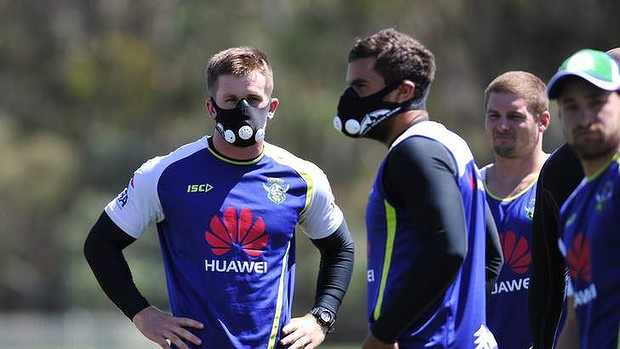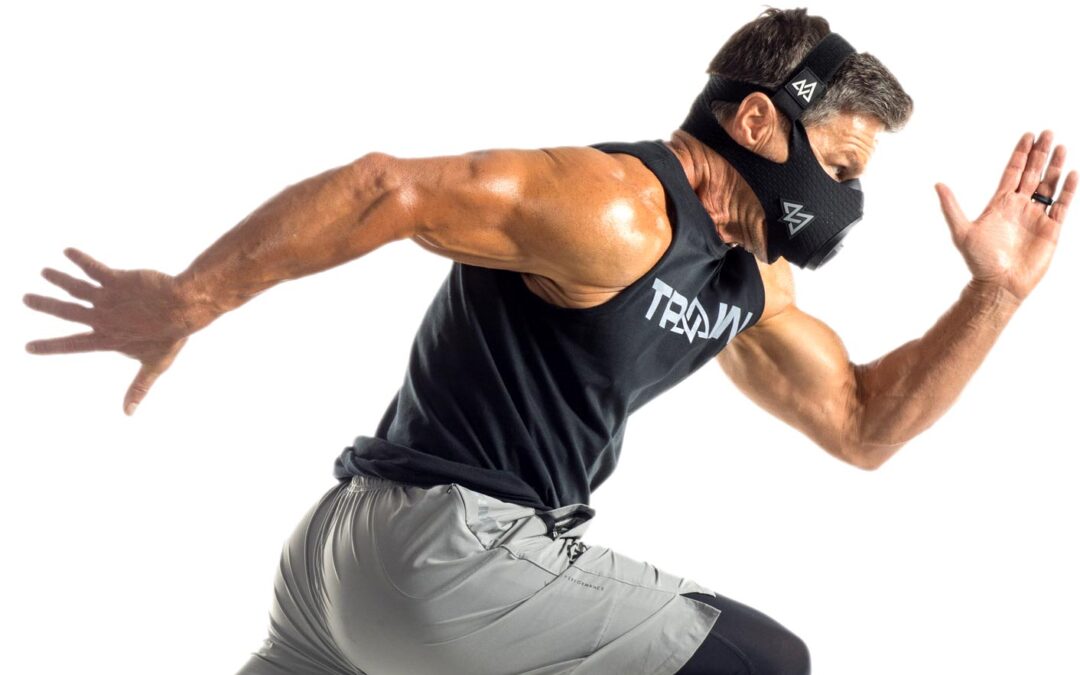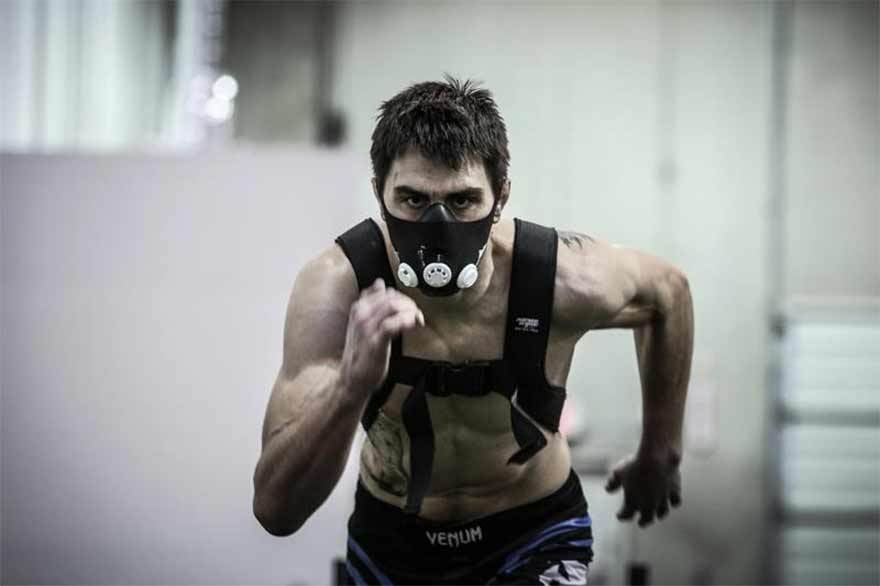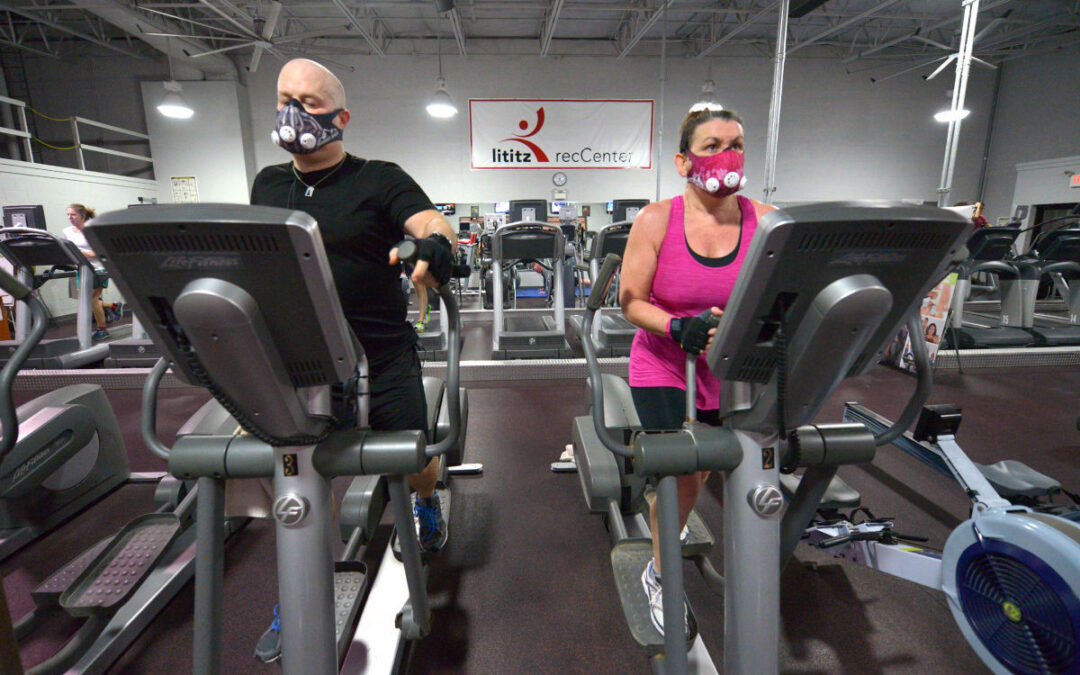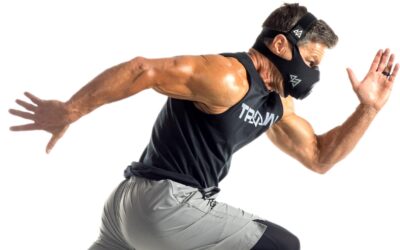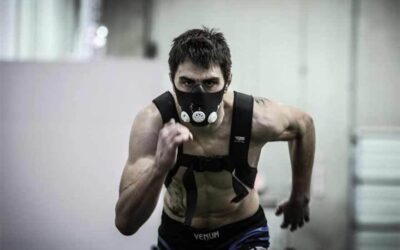Repeated sprint drills require an impressive amount of power, endurance and stamina. No matter if you are a runner, a football or rugby player your success will, or your athletic success will be greatly determined by your sprinting performance.
If you are looking to add a challenge to your traditional training and focus on improving your conditioning and respiratory endurance start integrating Training Mask into your workouts.
How the Training Mask works
The Training Mask uses a valve system to reduce the amount of airflow to the lungs, which forces you to take deeper breaths. This is what’s known as “restricted-air training” or “inspiratory muscle training.”
When lungs are pushed to work harder, the surface area in the alveoli— the tiny air sacs where the lungs and the bloodstream exchange carbon dioxide and oxygen, get stretched— making more room for blood and oxygen to flow.
The idea behind the efficacy of the Training Mask is that over time your lungs will adapt to this type of air resistance and use available oxygen more efficiently— and, as a result, increase your lung capacity and aerobic thresholds, too.
Here is a quote which gives you a clear and concise definition of the Training Mask, from Casey Danford, the CEO of Training Mask:
“The Training Mask 2.0 improves fitness and athletic performance by applying peripheral air resistance to inhaled air via six different elevation-resistance flux valve settings. The added load from this air resistance strengthens the respiratory musculature. In other words, it’s like lifting weights for your breathing muscles, which yields a number of benefits with continued use”.
Science Approved
A 2016 study published in the Journal of Sports Science and Medicine reported the Training Mask 2.0 improved several areas of breathing performance. The report showed: improved ventilatory threshold (VT), an indirect measure of anaerobic threshold; power output (PO), or workload at VT; respiratory compensation threshold (RCT), the point late in exercise testing at very high workload; and PO at RCT while wearing the Training Mask.
In the study, 24 moderately trained participants finished six weeks of high-intensity stationary cycling exercises two times a week for 30 minutes. The results showed significant improvements in the performance of the group which used the Training Mask.
How to use the Training Mask for sprint training
Incorporating the Training Mask into your sprint training program is pretty straight forward. You can use it every other workout, so you can still do half of your workouts as you normally would.
Based on the research done at the London Southbank University and Exeter University, the following sprint training programs will improve performance by increasing sprinting speed, and by allowing you to sustain a high speed for longer periods of time. In short, your sprinting performance will be improved regardless if you are doing just short distance sprints or longer distance sprints.
Warm-Up
2 sets of 10 repetitions each of knee pulls, quad pulls, lunges, lateral lunges, skipping, and carioca drill. Alternatively you can replace these with around 15 minutes of any other type of dynamic stretching and activation drills.
The researchers did the warm-up sets with the Training Mask off. If you want to get your respiratory system warmed up a little bit faster you can put on the Training Mask and do fewer sets.
Workout
- 3 sprints of 20 meters each done at full speed. Rest for up to 3 minutes between the sets. Training Mask is off.
- 10 sprints of 20 meters each done at full speed. Rest for just 30 seconds rest between sets. Training Mask is on during these sprints. Unfortunately the study doesn’t go into detail about the air resistance settings use, but we recommend starting off with the easiest valve and moving on from there.
Cool-Down
The cool down consisted of static stretching of all major muscle groups such as the hamstrings, quadriceps, hip flexors, glutes, calves, shoulders and chest. Put more emphasis on the stretching the lower body parts.


